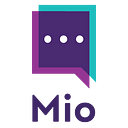Upgrading from Jabber to Webex, but have Microsoft Teams users?
Always wanted to access the next-level features of Webex? Never ready to get rid of your Jabber solution?
You’re in luck.
Businesses can now connect Jabber with the Webex Cloud.
This hybrid solution means you can unlock greater productivity for your team.
Complete with a team messaging mode that delivers core to complex features, Jabber users can now utilize Webex.
Through the Webex Cloud, Jabber users can access file sharing, search tools and presence.
You can even federate the Jabber client with your Webex experience. Users in both platforms can now collaborate without switching apps.
All you need to do now is figure out how you’re going to deal with your Microsoft Teams users.
Moving from Cisco Jabber to Webex
As collaboration tools push UC customers towards a single cloud-based platform for their communication needs, Cisco is taking a different approach.
The updated connection between Jabber and Webex means that companies using on-premises tools can migrate to the cloud in phases — at their own pace.
The release of the integration between Jabber and Teams is part of a wider effort by Cisco to connect their three unified communications clients: Webex, Jabber, and BroadSoft UC-One.
Eventually, Cisco will align the code bases of the three apps, so people can access the same features, regardless of the tool they choose.
To use both Jabber and Webex simultaneously, you can simply enable the interop setting.
After some initial pilot testing, Cisco users should feel comfortable leaving their on-premise solutions behind and moving completely to the cloud.
However, there may be some businesses out there that prefer to maintain the flexibility of a hybrid collaboration experience.
Whichever path you choose, there is one big question you’ll need to ask. What are you going to do about your Microsoft Teams users?
You may also like: Ultimate Guide to External Federation in Teams
Microsoft Teams vs Webex, or Microsoft Teams and Webex?
Whilst a new interoperability solution between Cisco Jabber and Webex might make it easier for your on-premises and cloud teams to chat, there’s still a problem if you have other members of your team working on alternative chat apps.
Your Microsoft Teams users use that client as it is their personal preference — or it has features that need outside of the Cisco stack.
Moving those members of your team to Webex is unlikely to drive the results that you want.
Instead, you’ll end up with two separate groups in your company — people using Cisco and people using Microsoft.
So, how do you fix this problem? You have two reasonable options.
1. Migrate everyone to Cisco
You do have the option to move everyone to Webex.
However, the process of decommissioning a collaboration tool is rarely as simple as it seems.
You’ll need to:
- Prevent data loss while moving your Microsoft Teams employees into Cisco channels. This means migrating all of your existing content over into a new environment and ensuring that your employees don’t misplace their data.
- Transition your Microsoft Teams workflows and integrations into Webex. With a little luck, all of the integrations your employees rely on in Microsoft Teams will also be available with Webex. This is rarely the case for most companies though. You may need to invest in workarounds that require extra training for employees, or you could be left without essential solutions for employee productivity.
- Convince everyone to move to a new app. You’ll also have to make sure that your employees are comfortable with the idea of moving to a new enterprise chat app and staying there. Fail to drive adoption properly, and Microsoft Teams will simply become shadow messaging.
2. Combine Webex and Microsoft Teams
Alternatively, you could find a way to combine Microsoft Teams and Webex users.
In a world where everyone has their own preferences regarding chat tools, it makes more sense in the long term to support multiple messaging environments at once.
How do you do that? The simple answer is: Mio.
Mio keeps everyone in your environment collaborating in their existing Microsoft Teams and Webex environments while syncing messages across platform.
This is the best way to get the most out of your collaboration strategy when you migrate from Jabber to Webex.
With Mio, everyone gets to use the tools that they prefer, without the complex migration plan.
Your Microsoft Teams users will be able to stay on the same platform while chatting with colleagues on Webex, and vice versa.
Mio is simple to set up:
- Connect all the chat apps your teams use by creating your Mio Hub
- Import all users and channels at once, or select them one by one
- Team members in your Mio Hub can immediately chat in DMs or groups with members on other platforms
- File sharing, threaded messages, reactions, and the ability to edit and delete messages are all supported with Mio
- New conversations will be mirrored in the primary chat platform each employee prefers to use
Discover the power of a better-connected team today and learn more about Mio with this handy video!

